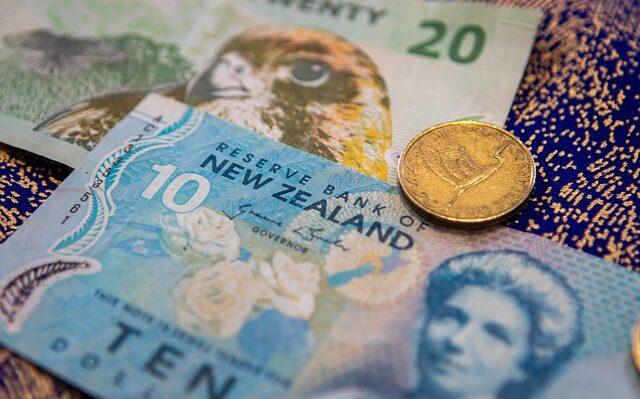
The New Zealand Dollar fell again on Wednesday, making it three consecutive sessions of losses for the Kiwi.
The New Zealand dollar eased after a smaller-than-expected rate hike from the Reserve Bank of New Zealand (RBNZ). In October, the RBNZ became one of the first major central banks to raise interest rates, and overnight the central bank raised interest rates again.
RBNZ raised its interest rate to 0.75% and raised its long-term cash rate projection by 50 bps.
Fresh new COVID-19 cases are still at a high in New Zealand, and little improvement has been seen in trying to flatten the curve. However, despite the high number of new cases the New Zealand government has chosen to end pandemic restrictions and live with COVID.
The RBNZ needed to act in raising its interest rates because inflation in the 52nd-largest national economy in the world is at its highest level in 19 years, Meanwhile, the housing market remains strong and the employment market is tight.
Investors and market analysts had forecast a larger interest rate raise and long-term cash rate projection from the central bank, and interest rate swaps reversed sharply afterward.
Westpac strategist Imre Speizer told Reuters:
“The unwind aggressive expectations might be a blueprint for other markets that have become similarly positioned, but in the meantime, the New Zealand dollar could be on the ropes against a rising dollar,”
“If it fell below $0.69, I think we’re in danger of going below $0.68,”
New Zealand Dollar Falls
At the time of writing, the New Zealand Dollar, also known as the Kiwi, is down 0.45% against the US Dollar, trading at $0.6916. There has been a slight rally from the intraday low of $0.5986, following the smaller than expected rate hike, having hit a high of $0.6955 prior to the RBNZ announcement.
Elsewhere, the New Zealand Dollar is down across the board in the Forex markets. The Kiwi is down 0.47% against its Australian counterpart the AUD and down 0.53% against the British Pound.



